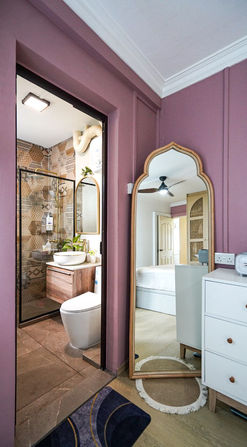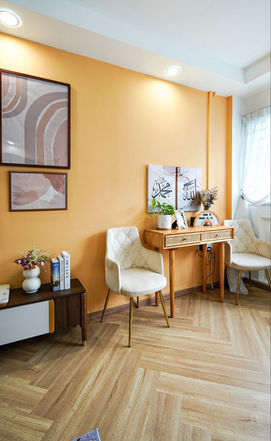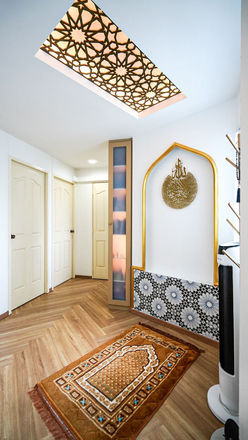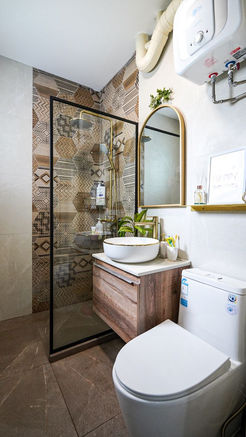Muslim Interior Design
Muslim interior design, also known as Islamic interior design, offers a unique and elegant approach to home decor that balances aesthetics, functionality, and cultural values. It emphasizes privacy, modesty, and comfort, ensuring each space serves its intended purpose while reflecting the rich heritage of Islamic art and architecture.
Importance of Privacy in the Muslim Homes
Privacy is a fundamental aspect of Muslim home interior design. In Islamic culture, homes are sanctuaries that provide security and comfort for family members. To achieve this, Muslim homes are designed with features that offer maximum privacy without compromising beauty and functionality.
One common feature of traditional home designs is the use of inner courtyards, which serve as private family areas shielded from the outside world. Long hallways or screens often separate the front door from the main living areas, preventing direct views into the home. This layout ensures visitors can be welcomed without invading the private spaces of the household, maintaining both hospitality and privacy.
The Traditional Use of Furniture
Traditional Islamic home design often includes furniture that is both functional and aesthetically pleasing. Historically, seating arrangements consisted of cushions and low seating around the room's perimeter. This setup maximizes space and promotes a relaxed and communal atmosphere, essential for family gatherings and social events.
Large copper trays in Muslim homes serve dual purposes: they act as tables and serving dishes. These versatile pieces are not just functional; they bring a touch of elegance to any setting. Additionally, furniture in Muslim households often features intricate patterns, mosaics, or mother-of-pearl inlays, showcasing the rich artistic traditions of Islamic culture.

How Muslims Decorate Their Homes
Decorating a Muslim home involves carefully selecting accessories and design elements that adhere to Islamic principles. One key aspect is the prohibition of depicting human and animal forms in art, leading to the use of geometric patterns, arabesque designs, and calligraphy.
Calligraphy, often showcasing verses from the Quran, is a significant decorative feature in Muslim homes. This art form not only enhances aesthetic appeal but also imbues the space with a spiritual atmosphere, constantly reminding the inhabitants of their faith.
Intricate geometric and arabesque patterns are omnipresent, manifesting in various forms such as mosaic tiles and carved woodwork. These designs contribute to a visually appealing and harmonious environment, reflecting the household's cultural and spiritual values.
Most windows in Muslim households are covered with heavy screens or mashrabiya, allowing privacy while letting in natural light. These beautifully functional and decorative elements add exquisite beauty to the window area, making the entire home elegant.
The Use of Lighting
Lighting plays a crucial role in Muslim house interior design, enhancing the ambiance and functionality of the space. Traditional Islamic lamps and lanterns, often made from brass or copper, are used to create a warm and inviting atmosphere. These lamps feature intricate designs and stained glass, casting beautiful patterns of light and shadow.
Modern Islamic house design incorporates natural lighting through placement of window and skylight locations. This minimizes the need for artificial lighting and creates bonding with the outdoors, giving an effect of serenity and spaciousness in the home.
Why Choose Us
Choosing us for your Islamic interior design needs ensures a blend of tradition, modernity, and personalized service:
Expertise in Muslim Interior Design: Our team of skilled Muslim interior designers are experts in crafting interiors that honor cultural values while integrating contemporary design elements.
Customized Solutions: We design bespoke interiors tailored to your unique needs, ensuring functionality and beauty in every corner of your home
Attention to Detail: We meticulously select materials and place decorative elements with care, guaranteeing a high-quality finish.
Innovative Design Approach: We blend traditional Islamic design with modern styles, employing contemporary materials and techniques to create spaces that are both unique and timeless.
Client-Centered Process: Our design process is collaborative and client-focused· We collaborate with you to understand your vision and make it a reality
-
Q1: What are the key elements of Muslim interior design?Muslim interior design focuses on privacy, functionality, and aesthetics. Key elements include inner courtyards, traditional furniture, calligraphy, geometric patterns, and strategic use of lighting.
-
Q2: How do you ensure privacy in Muslim home interior design?Privacy is achieved through architectural features such as high walls around courtyards, separate guest areas, and the use of ornate screens and curtains on windows.
-
Q3: Can modern design elements be integrated into traditional Muslim interiors?Yes, modern design elements can be seamlessly integrated with traditional features. We use contemporary materials and lighting solutions to complement traditional patterns and motifs, creating a harmonious blend of old and new.





